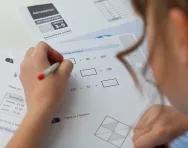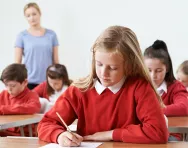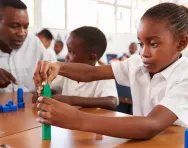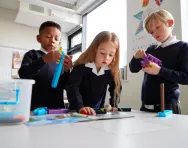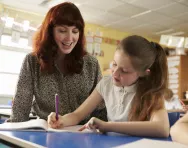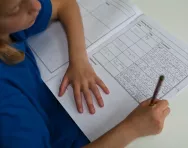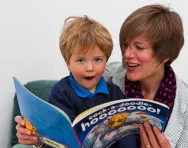Important update from TheSchoolRun
For the past 13 years, TheSchoolRun has been run by a small team of mums working from home, dedicated to providing quality educational resources to primary school parents. Unfortunately, rising supplier costs and falling revenue have made it impossible for us to continue operating, and we’ve had to make the difficult decision to close. The good news: We’ve arranged for another educational provider to take over many of our resources. These will be hosted on a new portal, where the content will be updated and expanded to support your child’s learning.
What this means for subscribers:
- Your subscription is still active, and for now, you can keep using the website as normal — just log in with your usual details to access all our articles and resources*.
- In a few months, all resources will move to the new portal. You’ll continue to have access there until your subscription ends. We’ll send you full details nearer the time.
- As a thank you for your support, we’ll also be sending you 16 primary school eBooks (worth £108.84) to download and keep.
A few changes to be aware of:
- The Learning Journey weekly email has ended, but your child’s plan will still be updated on your dashboard each Monday. Just log in to see the recommended worksheets.
- The 11+ weekly emails have now ended. We sent you all the remaining emails in the series at the end of March — please check your inbox (and spam folder) if you haven’t seen them. You can also follow the full programme here: 11+ Learning Journey.
If you have any questions, please contact us at [email protected]. Thank you for being part of our journey it’s been a privilege to support your family’s learning.
*If you need to reset your password, it will still work as usual. Please check your spam folder if the reset email doesn’t appear in your inbox.
What are age-related expectations?

We all want to know how well our children are doing at school, but if you have a primary school child, it’s not as simple as them getting an A, B or C.
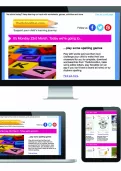
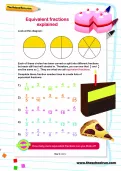
Start a unique learning programme!
- Weekly programme for each school year
- Worksheets sent direct to your inbox
- Keeps your child's learning on track
Children are classed as:
- Working towards the expected standard
- Working at the expected standard
- Working above the expected standard
Pupils who fall into the middle bracket are meeting ‘age-related expectations’ and children who are working at greater depth are seen to have mastered the learning expected for their age and stage and have been delving into it in greater detail.
What are age-related expectations?
All maintained schools in England have to follow the National Curriculum. Age-related expectations are based on what children should have learned, or be able to do, at the end of each Key Stage.
It works on the premise that the average child of that age and stage should meet the given standard.
Age-related expectations are usually set out as ‘pupil can’ statements, e.g. ‘Sarah can tell the time to the nearest 15 minutes.’
SATs and age-related expectations
The main measure of age-related expectations for primary school pupils is their attainment in end of Key Stage SATs. KS1 SATs take place at the end of Year 2. KS2 SATs take place at the end of Year 6.
A pupil’s SATs results determine whether they are meeting age-related expectations, working towards, or working above.
Because SATs only measure attainment in English reading (KS1 and KS2), spelling, punctuation and grammar (KS2 only) and maths (KS1 and KS2), teacher assessments of whether a child has met the age-related expectations are used for English writing and science.
What does your child need to do to meet age-related expectations?
The Department for Education (DfE) sets out what a child should be able to do by the end of KS1 and KS2, as measured by SATs and teacher assessment.
There’s a comprehensive list of skills and knowledge for each core curriculum area that a child should have mastered in order to meet age-related expectations. SATs test these key areas.
In subjects where teacher assessment applies, including writing and science, there’s a set of objectives that children have to fulfil to be classed as meeting age-related expectations.
The ideal is that a child should have ticked off all of the learning objectives, but there is some discretion: if the child falls short of the expected standard in just a couple of areas, but is generally ‘secure’ in the rest, they may be deemed to be meeting age-related expectations.
Find out about what your child needs to know or do to meet age-related expectations at the end of Year 2 and Year 6.
What about age-related expectations in non-SATs years?
Pupils in Reception, Year 1, and Years 3 to 5 don’t take SATs, so teachers make their own assessments of whether a child is meeting age-related expectations based on the National Curriculum for that year and how much of it they have learned or can do.
These assessments could be based on classwork and homework, 'optional SATs' which could end-of-year tests set by schools themselves or externally set tests such as those produced by NFER, or a combination of these.
Communicating age-related expectations to parents
In SATs years, you’ll be told whether or not your child has met age-related expectations, or is working towards or above them, in each of the areas above.
In Year 2, you won’t be given your child’s exact SATs scores (unless you ask), but in Year 6, you will likely be told their marks.
In non-SATs years, schools have flexibility over how they communicate their pupils’ attainment to parents. Some use their own system that equates to the expected standards, such as alphabetical (A, B, C) or numerical (1, 2, 3) grades.
Most, however, assess and inform parents of children’s progress according to the age-related expectation statements above, even if the wording differs slightly.
You’ll be informed of your child’s outcomes in each of the core curriculum areas (reading, writing, maths and science) in their end-of-year report.
If you’re in doubt about your child’s outcomes, speak to their teacher in the first instance. They will be able to explain how they arrived at their judgement and discuss any concerns you might have.

